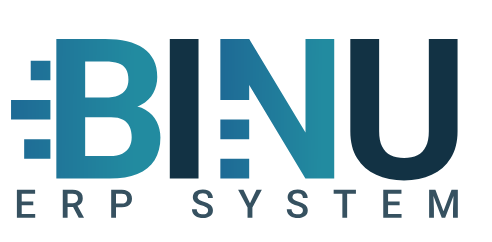ERP Implementation
Integrating a new Enterprise Resource Planning (ERP) system like Binu into an organization is a critical step toward streamlining business processes, enhancing productivity, and achieving long-term growth. However, the integration process can be complex and challenging. Here, we explore the various integration possibilities and best practices to ensure a smooth transition.
All modules
Implementation
Documentation
Support

Implementing styles and methods
Implementing styles and methods effectively during the deployment of a new ERP (Enterprise Resource Planning) system is crucial for achieving a smooth transition and ensuring long-term success. Choosing the right integration strategy for Binu ERP depends on various factors, including the organization’s size, complexity, and tolerance for risk. By following best practices such as thorough planning, extensive testing, and effective communication, organizations can ensure a successful ERP integration that enhances efficiency and drives growth. By following or choose on of these best practices, organizations can effectively implement styles and methods for a new ERP system, ensuring a successful deployment and long-term benefits.
Ensure training and helpful resources for all users before the switch
Plan out the implementation process with timeframe and phases
Establish plan to address any issues and feedback
Phased Implementation
Phased implementation involves phasing in module by module and then make a soft switch when the new ERP System is operational and the staff is ready. This is the easiest and safest way that we recommend for first time ERP implementation.
What is the best practice?
Modules by priority plan
Twin Implementation
Twin implementation involves running the new Binu ERP system alongside the existing system for a period of time. This parallel operation allows users to familiarize with the new system while still relying on the old one before making a switch.
What is the best practice?
Create a timeline for the parallel run
Clone Implementation
Clone implementation refers to creating an exact copy of the current system’s data and processes in the new Binu ERP system. This approach minimizes the risk of data loss and ensures that all historical data is preserved. With a hard switch.
What is the best practice?
Test the clone before going live
Big Bang Implementation
Big Bang implementation involves switching from the old ERP system to the new Binu ERP system in one go. This approach is suitable for organizations that can afford a short downtime and want to avoid the complexity of running two systems concurrently.
What is the best practice?
Train the staff before the switch
Hybrid Implementation
Hybrid implementation is a combination of waterfall and agile methology, that is a combination of clone and twin where each phase must be completed before the next begins and going live in a controlled and structured way.
What is the best practice?
Tailor the approach by company needs
Migration Implementation
Migration implementation is the process of transferring data from the old system to the new Binu ERP. This method is often used when a complete switch from the old system to the new one is necessary.
What is the best practice?
Make switch during low-activity periods
Try Binu ERP today
Despite its advanced capabilities, Binu ERP boasts a user-friendly interface that simplifies complex operations. The intuitive design ensures that users at all levels can easily navigate the system and access the information they need. This reduces the learning curve and enhances productivity across the board.
All modules included in the solution
Integrated documentation
Self learning system

